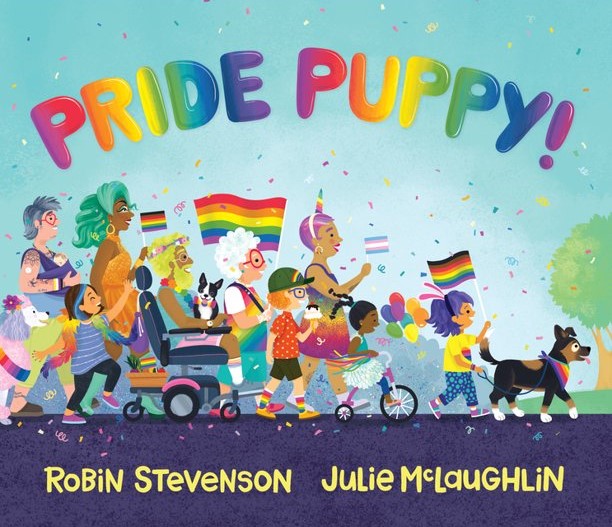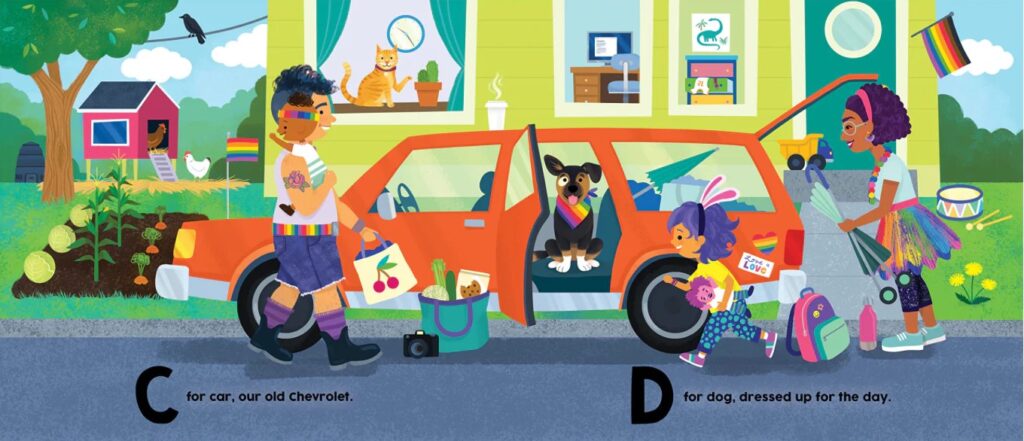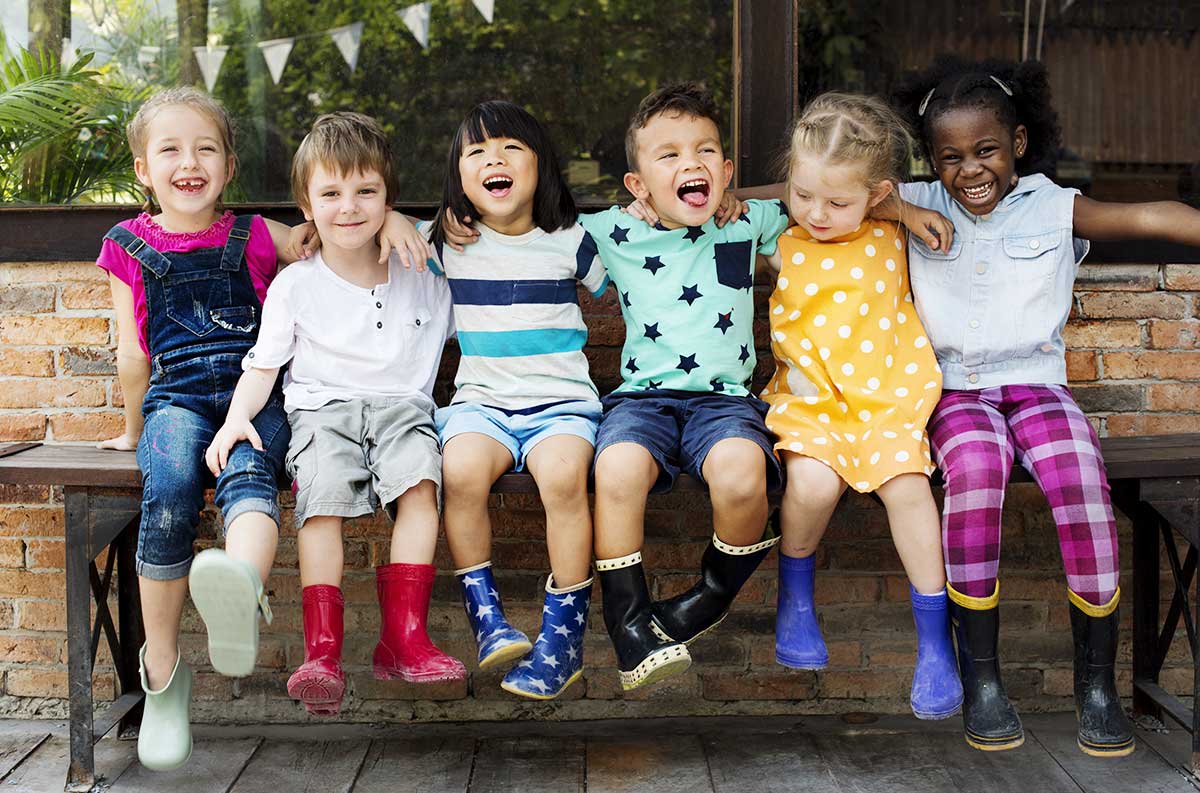
Inclusive Children's Book Teaching Guide
Pride Puppy
What is this book about?
A young child is having a wonderful time celebrating Pride with family members—meeting up with Grandma, making new friends, and eating ice cream.
But then something terrible happens: The family dog gets lost in the parade! Luckily, there are a lot of people around to help reunite the pup with its family.
This rhyming alphabet book tells a lively story with rich, colorful illustrations that will have children poring over every detail as they spot items starting with different letters of the alphabet.
An affirming and inclusive book that offers a joyful glimpse of a Pride parade and the vibrant community that celebrates this day each year.
Who is depicted in this book?
- LGBTQ+ led families
- Children or adults who are/may be LGBTQ+
- Children or adults who transcend gender stereotypes
What early childhood themes and concepts does this book explore?
- Letters and colors through an LGBTQ+ inclusive lens
- Different types of families
- Types of clothing and ways to dress
- Pride as a holiday, featuring different children, adults and families celebrating Pride and preparing to participate in a Pride parade
- The Pride Puppy, appearing in different contexts and engaging in different actions as the story unfolds
How does this book support anti-bias education?
Along with other texts, this book may be used to represent and affirm diverse families to all children and highlight the characteristics that all families share. It also features images that can spark discussions about flags, parades, the diversity of LGBTQ+ community members, and the messages on the signs held by the people marching in the Pride parade.
Depending on how the book is shared or used—and the developmental level of the children—the images and text may be used to support the following core goals from the book, Anti-Bias Education for Young Children and Ourselves:
Identity—Teachers will nurture each child’s construction of knowledgeable and confident personal and social identities so that children will demonstrate self-awareness, confidence, family pride, and positive social identities.
Diversity—Teachers will promote each child’s comfortable, empathetic interactions with people from diverse backgrounds so that children will express comfort and joy with human diversity, use accurate language for human differences, and form deep, caring connections across all dimensions of human diversity.
How can this book be used to meet early childhood learning standards?
For all ages
Use Pride Puppy to meet early childhood literacy standards >
For children from birth to age three
Teaching suggestion: Point out some of the colors and familiar objects that appear in the story.
What Illinois Early Learning Guideline does this meet for children from birth to age three?
Developmental DomainCognitive Development
Standard: Concept DevelopmentChildren demonstrate the ability to connect pieces of information in understanding objects, ideas and relationships.
Indicators for children:
- Begins to identify and name objects and people (16–24 months)
- Begins to identify characteristics of the object, such as “red ball” (16–24 months)
- Identifies characteristics of objects and people when named, such as colors (21–36 months)
Teaching suggestion: Model different words for parents within a variety of family structures.
What Illinois Early Learning Guideline does this meet for children from birth to age three?
Developmental DomainSocial-Emotional Development
Standard: Self-ConceptChildren develop identity of self.
Indicators for children:
- Shows awareness of significant people by calling them by name, such as “papa” (7–18 months)
- Points to self in media (16–24 months)
- Names family members and shares stories about them (21–36 months)
For preschoolers (ages three to five)
Teaching suggestion: Encourage the children to notice and discuss similarities and differences between family structures and family members.
What Illinois Early Learning and Development Standards does this meet for preschoolers?
Social Studies Standard18BDevelop an awareness of self within the context of family.
Benchmark 18.B.ECa:
Understand that each of us belongs to a family and recognize that families vary.
Teaching suggestion: Encourage the children to notice and discuss human diversity, including skin color. Probe their assumptions about gender expression and expand their ideas of how gender “looks.”
What Illinois Early Learning and Development Standards does this meet for preschoolers?
Social Studies Standard18AExplore people, their similarities and their differences.
Benchmark 18.A.ECa:
Recognize similarities and differences in people.
Teaching suggestion: Compare this book with another text featuring families and/or the colors of the Rainbow flag, such as Rainbow: A First Book of Pride by Michael Genhart. Discuss what the children see in these two different depictions of Pride.
What Illinois Early Learning and Development Standards does this meet for preschoolers?
Language Arts Standard2DEstablish personal connections with books.
Benchmark 2.D.ECb:
With teacher assistance, compare and contrast two stories relating to the same topic.
Teaching suggestion: Encourage the children to find pictures of objects or people that start with the letter or letter sound featured on each page.
What Illinois Early Learning and Development Standards does this meet for preschoolers?
Language Arts Standard4CDemonstrate an emerging understanding of spoken words, syllables and sounds (phonemes).
Benchmark 4.C.ECd:
With teacher assistance, isolate and pronounce the initial sounds in words.
Teaching suggestion: As you share the book, stop and ask the children what they see in the illustrations to spark discussions about new words and concepts. Demonstrate concepts such as "missing" or "victory."
What Illinois Early Learning and Development Standards does this meet for preschoolers?
Language Arts Standard1EUse increasingly complex phrases, sentences and vocabulary.
Benchmark 1.E.ECb:
Exhibit curiosity and interest in learning new words heard in conversations and books.
Benchmark 1.E.ECc:
With teacher assistance, use new words acquired through conversations and book‐sharing experiences.
Teaching suggestion: Ask the children what they think the word "Pride" means. Discuss why people need to feel a sense of pride and note that Pride celebrations bring people together in a way that makes them feel safe and valued as members of the LGBTQ+ community.
What Illinois Early Learning and Development Standards does this meet for preschoolers?
Social/Emotional Development Standard31ADevelop positive relationships with peers and adults.
Benchmark 31.A.ECb:
Recognize the feelings and perspectives of others.
See inside this book.

